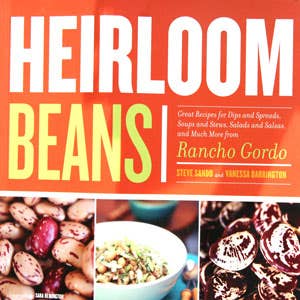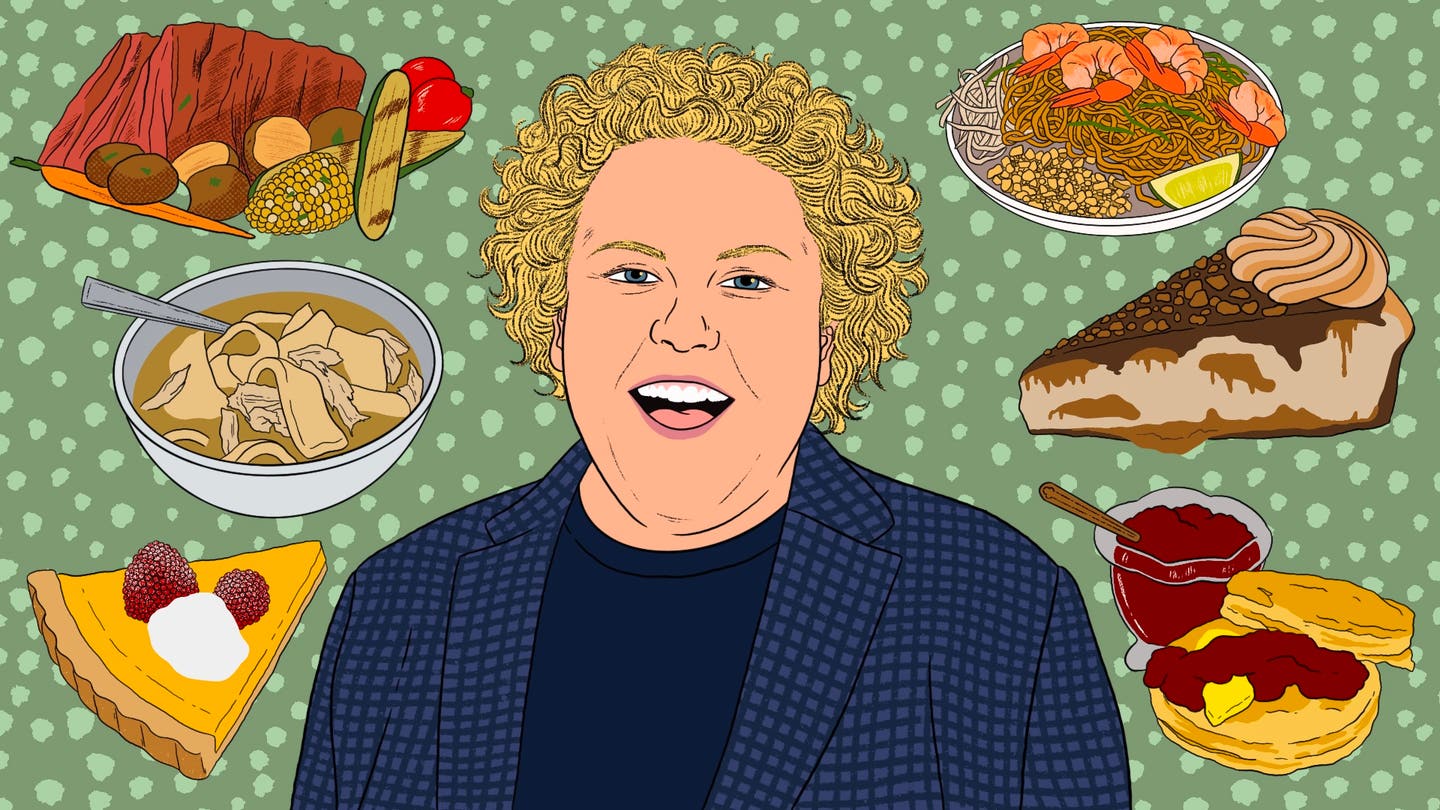
Full of Beans
Steve Sando has an unusual object of affection: beans. His passion for rescuing and growing nearly extinct heirloom varieties led him to found Rancho Gordo, a California farm, in 2001 and recently to write, with Vanessa Barrington, Heirloom Beans (Chronicle, 2008), devoted entirely to tasty bean concoctions. Sando's collection, from the wren's egg, a creamy bean with wine-colored markings, to the yellow eye, a golden-splotched bean that pairs well with pork, has inspired chefs and foodies across the country and is helping to elevate the status of the traditionally lowly legume. Recently SAVEUR caught up with Sando to learn what distinguishes heirloom beans and gather some tips for preparing them at home.
**How are heirloom beans different from regular supermarket ones?
**
The main difference is in flavor. Modern supermarket beans are bred to have huge yields, be of uniform size, and be disease and bug resistant, all of which have an impact on their flavor and texture. Heirlooms, on the other hand, are pretty individual—some are buttery, some are creamy, and some are kind of beefy.
**Is it true that most beans you see in supermarkets have been sitting on the shelves for years and years?
**
I've heard that seven to ten years is the average age of supermarket beans, and really old beans can be grainy and dull. By contrast, 90 percent of the beans we sell at Rancho Gordo are under one year old.
**How did you become so passionate about beans?
**
When I was growing up in California, my junk food was tacos. I especially liked refried beans. Later, when I was learning to cook, beans still fascinated me. Because there are so many variants, when you prepare beans it involves more than just following a recipe. It's kind of a science. I first encountered heirloom beans in a catalogue, and when I tried them I just fell in love with them.
**Was it through the subject of beans that you became interested in pre-Columbian foods?
**
I've always been curious about what it means to be an American. I used to live in London and in Italy but decided to start thinking about the Americas instead of doing a second-rate job of being European. I think when we define who we are, we really need to look south of the border, too.
**The Rancho Gordo site contains a long list of foods, including beans, that are indigenous to America. I was surprised by how many there are.
**
Beans grow really well here and are from here, so we really should be cultivating them and learning as much as we can about them. It makes me sick that we stand to lose varietals because we don't even know what they are. A great example is the vallarta bean. It was on the verge of extinction when Thomas Keller, the acclaimed founder of the French Laundry, decided that he really liked it and started to cook with it. Now everyone wants to know about the Thomas Keller bean, and it's thriving.
**Thomas Keller was one of the first chefs you started working with. What other restaurants do you work with now?
**
In California, Manresa and Range; in Houston, Cafe Annie; in New York, the Four Seasons and Insieme; in Pocantico Hills, Blue Hill at Stone Barns; in Washington, D.C., CityZen; and in Boulder, Frasca. We also sell our beans at several stores and online.
**What inspired you to write a cookbook?
**
I really wanted to promote beans. When I was planning the book, I insisted on including chapters about how and why beans are important and also how to cook them. I cook beans probably four times a week, so it's like second nature to me. But when I'm working at the farmers' market, I'm constantly reminded of how intimidating beans can be for the average home cook.
**Can you share a few of your favorite recipes from the book?
**
I'm crazy about the cellini bean soup, which is made with white beans and poached eggs. It's easy to make and comes from Range, a restaurant in San Francisco that people love. Chiles rellenos is another one of my favorites. We make them with wild rice, refried beans, and manchego cheese.
**Is there a particular cuisine that you think makes the best use of beans?
**
No; that's the beautiful thing. We have an Indian recipe in the book that uses cranberry beans. Greeks use them. All European cuisines do too, really. In Asian cooking, beans tend to be used in a sweet capacity, which is something I'd like to explore more.
**What should home cooks keep in mind when preparing heirloom beans?
**
First, it's going to take longer than you think! There's a magic moment when your apartment starts smelling like beans, but you need to remember that the beans are still not done at that point. The addition of salt is up for debate; some people believe that salting keeps the beans from cooking properly. I salt later, as opposed to early, in the process of cooking because salting too early can give some beans a grainy texture. But acid is one thing that really does prevent beans from softening, so you don't want to add lime, tomato, molasses, or anything like that to your pot until the beans are fully cooked. I had a really well-known chef say to me once, 'Your beans never cook.' We finally realized he was soaking them for 24 hours, and at that point the beans are about to sprout.
**How long should you soak beans?
**
Technically, you don't have to soak, but four to six hours is usually about right, and it does help the texture of the beans. There's no absolute. In Mexico cooks usually don't soak their beans, and if they do, they don't change the water, whereas many people here insist that changing the water is the most important thing. I soak them in the morning, cook them when I get home, and keep the water.
**How do you go about discovering and reviving old bean varieties?
**
Unfortunately many of the old varieties are so hard to grow that commercially we can't sustain them, but we still grow them for seed exchange groups like Seed Savers. The process usually begins at a market in Mexico. I get beans from the old women sitting around on mats. Last year I was in a small town in Guanajuato, and I met a farmer with yellow beans called mantequilla, which means butter. They were pale yellow and actually did have a buttery flavor. That was a fun discovery.
**Are there really that many old varieties to discover?
**
Yes, but the scary thing is that NAFTA's protections against beans and corn all expired this year in Mexico, so the country is now being flooded with crappy black beans from the U.S., and the beans are so cheap that people aren't growing their own anymore. So, I'm working with the government and nonprofits in Puebla and Oaxaca on an effort to buy indigenous beans and help the farmers grow them for export.
**What's your current bean obsession?
**
I love Christmas limas. They have a really nice chestnut flavor and a really beefy bean broth that is shockingly good with just onion, garlic, and water. You can also use them in a salad or with garlic and wild mushrooms, and they're incredible. I'm a total meat eater, but I don't think you need meat with these beans. Even using chicken stock or ham hocks is a waste.
Keep Reading
Continue to Next Story










